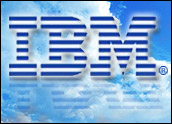
Many people have defined software development as more art than science — sometimes even a dark art. That’s why the business side of an enterprise is often perplexed by the application lifecycle management (ALM) process. They see what goes in as requirements, and see what comes out as functionality — but they often don’t understand what takes place in between.
Yet new trends are unfolding in ALM, called ALM 2.0, to help organizations transform software development and deployment into a managed business process. Dynamic applications and services-oriented architecture (SOA) are also leading toward more componentized software, and that means more pieces to manage in design time as well as runtime. ALM 2.0 therefore points to the need to begin better coordinating between design phases and real-world use and efficiency of applications and services.
To help better understand the implications of ALM 2.0, and how Borland Software with its Open ALM approach is implementing it, I recently moderated a sponsored podcast with Carey Schwaber, a senior analyst at Forrester Research; Brian Kilcourse, CEO of the Retail Systems Alert Group and former SVP and CIO of Longs Drug Stores, and Marc Brown, vice president of product marketing at Borland.
Here are some excerpts:
Marc Brown: If you look at most businesses today, IT organizations are expected to have very managed processes for their supply-chain systems and for their human resources systems, but when it comes to software delivery or software development, as you mentioned, there is this sense that software is some sort of an art.
We would really like to demystify this and put some rigor to the process that individuals and organizations leverage and use around software delivery. This will allow organizations to get the same predictability when they are doing software as when they are doing the other aspects of the IT organization. So our focus is really about helping organizations improve the way they do software, leveraging some core solution areas and processes — but also providing more holistic insight of what’s going on inside of the application lifecycle.
Carey Schwaber: ALM isn’t just about developers. It’s really about all the roles that come together to ensure that software meets business requirements — from business analyst, to the architect, to the developer, to the project manager, the tester. And it feels like every year we end up with more specialized development teams than we had the year before. Specialization is great, because it means that we have more skilled people doing jobs, but it also means that we have more functional silos. ALM is really about making sure that every one of those silos is united, that people really are marching toward the same goal — to the same drumbeat. ALM is about helping them do that by coordinating all of their efforts.
In addition to functional silos, we’ve also got technology silos where we have a front-end in .NET, a back-end in Java, and maybe we’re using a BPM (business process management) tool to create the entire composite application. There are just so many ways that this gets more and more complex. Then, in addition to managing roles, you also have to manage all of these different components and their interdependencies.
In the past, vendors have collected ALM solutions over time by acquiring support for each role. They’d acquire a tool that supported business analysts in the work that they do. Then, they’d acquire a tool that supported testers or test leads and the work that they do. They’d integrate the two, but that integration never ended up being very good. That integration is where ALM comes in. ALM lives in coordinating the work that the tester, the business analyst and all the other roles involved really accomplish, to make sure that software meets business needs.
Brian Kilcourse: As most CIOs have done, I spent untold amounts of money trying to turn the software development process from an artistic activity to an engineering activity. There were a bunch of good reasons for that. One of them is that commercial computing is now over 60 years old. And one would think, at this point, that we would have figured out a way to commoditize it and make it more reliable. But it still remains, even after this long period of time, that software development is easily the most unreliable part of the whole value delivery equation that the IT department brings to the organization.
The fact that we are talking about ALM 2.0 is a big step in the right direction. In our business applications we need to be able to integrate at the information level and the data level, even if they are different code sets or physically different databases. From the business perspective we need to come up with one coherent answer to any kind of a business question. No matter what the toolsets are, we have one way to see them from a business perspective. I think that’s very encouraging.
We know from our business application stack that this is possible. So if it’s possible for the business, why isn’t it possible for the IT organization? You can call this a “cobbler’s children” problem. Why don’t we have for ourselves what we promise to deliver to our business associates?
Schwaber: SOA really does make quality that much more of an issue. We aren’t that good at it for basic, monolithic applications. Imagine how bad we’ll be at it with SOA? I really see SOA giving us an opportunity to do better, because in every service a defect is propagated to every single application that consumes that service. But if the service is high-quality, that quality level is propagated, too. Essentially we have a mandate to do a much better job on quality in our services because the stakes are so much higher. We really need to bulletproof services that are built for reuse.
Brown: Borland in its overall business strategy is completely focused on helping organizations transform the way they do software, and we are not promoting any particular type of platform or development environment. We are all about helping people understand how to manage the actual processes that govern ALM.
Dana Gardner is president and principal analyst at Interarbor Solutions, which tracks trends, delivers forecasts, and interprets the competitive landscape of enterprise applications and software infrastructure markets for clients. He also producesBriefingsDirect sponsored podcasts. Disclosure: Borland Software is a sponsor of BriefingsDirect business productivity podcasts.









































Social Media
See all Social Media